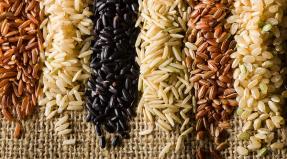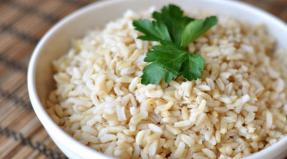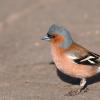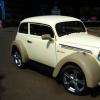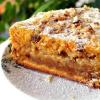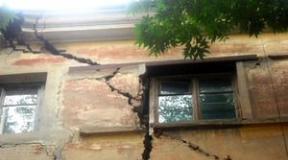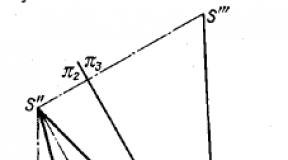Inky dung beetle. What secret do dung beetles hide: mushrooms for alcoholism or a dangerous poison? Dung beetle mushrooms - photo and description
- Division: Basidiomycota (Basidiomycetes)
- Subdivision: Agaricomycotina (Agaricomycetes)
- Class: Agaricomycetes (Agaricomycetes)
- Subclass: Agaricomycetidae (Agaricomycetes)
- Order: Agaricales (Agaric or Lamellar)
- Family: Coprinaceae (Coprinaceae or Dung beetles)
- Genus: Coprinus (dung beetle or Koprinus)
- View: Coprinus comatus (Ink mushroom)
- Other names for mushroom:
(lat. Coprinus comatus) is a mushroom of the genus Dung beetle (lat. Coprinus) of the Dung beetle family.
Hat:
Height 5-12 cm, shaggy, white, first spindle-shaped, then bell-shaped, practically does not straighten. There is usually a darker bump in the center of the cap, which, like the captain, is the last to disappear when the mushroom cap comes out on the ink. The smell and taste are pleasant.
Records:
Frequent, free, white, turn pink with age, then turn black and turn into "ink", which is common to almost everyone.
Spore powder:
Black.
Leg:
Length up to 15 cm, thickness 1-2 cm, white, hollow, fibrous, relatively thin, with a white movable ring (not always clearly visible).
Spreading:
Ink mushroom is found from May to autumn, sometimes in enchanting quantities, in fields, vegetable gardens, orchards, lawns, garbage dumps, dumps, dunghills, and also along roads. Occasionally found in the forest.
Similar species:
Ink fungus (Coprinus comatus) is almost impossible to confuse with anything else.
Edibility:
Great mushroom. However, it should be remembered that only mushrooms that have not yet begun to fulfill their Great Mission - to self-digestion, to turn into ink, can be collected. The plates must be white. True, nowhere is it said what will happen if you eat (eat, as they say in special publications) a dung beetle that has already started the process of autolysis. However, there are hardly any who want to. It is believed that the Ink fungus is edible only at a young age, before the staining of the plates, no later than two days after it emerged from the soil. It is necessary to process it no later than 1-2 hours after collection, since the autolysis reaction continues even in frozen mushrooms. It is recommended to pre-boil as conditionally edible, although there are claims that the mushroom is edible even when raw. It is also not recommended to mix dung beetles with other mushrooms.
It should also be noted that, according to scientific data, slop saprophytes like dung beetles pull all kinds of harmful products of human activity from the soil with special enthusiasm. Therefore, in the city, as well as near highways, dung beetles cannot be collected.
By the way, it was previously believed that Coprinus comatus contains substances that are incompatible with alcohol, and therefore, in a sense, is poisonous (although, if it comes to that, alcohol itself is poisonous, not a mushroom). It is now quite obvious that this is not so, although sometimes this old misconception pops up in the literature. Many other dung beetles advocate a healthy lifestyle, for example, or, although this is not certain. But the Ink mushroom, fortunately or unfortunately, is deprived of such a property. That's for sure.
Notes:
I have many childhood memories associated with the dung beetle. In the second grade, in the fall, I somehow unexpectedly became a big enthusiast of "urban mushrooms", spending whole days looking for dung beetles and. I knew all the yards in my neighborhood, I had a lot of voluntary helpers. Of course, they laughed at me, but for some reason they willingly helped.
At home, my inclinations found full support. Oddly enough, in terms of mushrooms, they completely trusted me even then, and every autumn, for several years in a row, dung beetles and, less often, champignons appeared on our table. Dung beetles stewed in sour cream and cheese on top - it is impossible to forget. How I started collecting them and why I stopped - I definitely don’t remember, but dung beetles in sour cream ...
The dung beetle is often mistaken for a toadstool or a poisonous mushroom. But it's not! They are considered inedible mainly due to the lack of pulp, because. thin-bodied mushrooms.
As for toxicity, they cause food poisoning only when consumed simultaneously with alcohol, but at the moment no deaths have been recorded. Belongs to the genus of agaric mushrooms, the Champignon family.
It has other names: coprinus (from lat. coprinus) and ink mushroom.
Description
The cap of the dung beetle is shaped like a bell, the flesh is fibrous. From above, it is abundantly covered with scales, resembling flakes. Thin plates change color from white to black with age.

The thin leg is very fragile, hollow inside.
Thin-bodied, the pulp is practically absent. Black oval spores. It grows extremely quickly, in a matter of hours, and in some cases the full ripening cycle is no more than one hour.

When ripe, the cap dissolves (autolysis), in place of the fungus, a slurry or an ink-colored spot in the form of a ring is formed. Autolysis continues after harvest, so it is impossible to store fresh mushrooms, even frozen. Require immediate heat treatment.

Edible only while young, determined by white plates. Therefore, dung beetle belongs to conditionally edible mushrooms. If the plates begin to turn yellow or turn pink, the fungus is no longer suitable.
Saprotroph, i.e. Helps break down organic matter.
Likes soil rich in organic remains, fertilizers, found on rotting trees, stumps. Collection time from May to October.
Kinds
There are only 25 species of dung beetles. Most mushrooms are considered non-edible, and some are even slightly poisonous.
dung beetle
The cap is covered with white scales, young mushrooms have the shape of a cylinder with a shaggy surface, in the mature one it opens to the shape of a wide bell, the surface becomes ribbed or wrinkled. It has a diameter of up to 3 cm. The cap, ripening, arches and darkens to black. The stem of the mushroom is thin, hollow, grows up to 10 cm, up to 0.5 cm wide, has a slight thickening at the base. It grows both in small groups and solitary.

Dung beetle white (shaggy)
The hat is abundantly covered with snow-white, silky scales, the mushroom immediately attracts attention with its beauty. Bell-shaped hat, up to 7-10 cm in diameter, and not more than 15 cm in height. Initially, the color is white, gradually darkening to brown or gray, becoming brownish in the middle. The leg grows up to 30 cm with a thickness of only 1-2 cm. Conditionally edible, incl. and raw. It has soft pulp. Growing up in families.

Dung beetle gray (ink)
The hat is gray in color, in the middle it has a darker seal. Scales are present, but small, slightly darker than the cap. The cap of a young mushroom has an ovoid shape, in a mature one it opens to the shape of a bell (about 10 cm in diameter). A young dung beetle has a white centric ring that disappears as it grows. The leg grows up to 15-20 cm, no more than 2 cm thick. The pulp has a sweetish taste. Grows in large groups.

A small ovoid or bell-shaped hat (only 3.5 cm high and 4 cm in diameter). It has a yellow-brown color, darker in the middle. Covered with small granular scales that disappear as they grow, the Scale is given a slightly glossy sheen. The flesh is white, with a slightly sour taste. The leg is thin, fragile, hollow, up to 8-10 cm in height, up to 0.5 cm thick. The plates are thin, adherent, frequent, in a young dung beetle are white or with a brownish tint, blacken and dissolve as they mature. Found on dead, decaying wood. Grows in groups.

Where does it grow
Loves fertilized soils rich in plant remains. Therefore, it can be found not only in the forest near rotting trees or immediately on them, but also in summer cottages, city parks, near residential buildings, on stumps. It can be found right on the beds, garbage dumps, compost heaps. Widespread in many countries with a temperate climate.

Nutritional value and calories
Per 100 g of product:
Chemical composition
- 90% of all pulp is water;
- vitamins of groups B, C, E, D1, D2, K1, thiamine, riboflavin, choline, betaine, tocopherol, tocotrienol;
- minerals: calcium, magnesium, potassium, phosphorus, sodium, manganese, zinc, selenium, iron, copper;
- amino acids (17 pcs, including 8 essential ones);
- koprin - a substance incompatible with alcohol (severe poisoning occurs);
- glucose, fructose;
- tyrosinase;
- nicotinic, pantothenic, folic acids;
- saturated and polyunsaturated fatty acids;
- tyrosine and histidine - only in wild mushrooms, they are absent in artificially grown mushrooms;
- trypsin and maltase;
- polioses.

Beneficial features
- promotes digestion, stimulates appetite;
- lowers blood pressure;
- antibiotic;
- reduces sugar levels;
- antitumor;
- hemostatic;
- bactericidal;
- anti-inflammatory;
- antioxidant.
Contraindications
Dung beetles are so harmless that there are practically no contraindications for them. But for the treatment of alcoholism, they should not be used if there are severe cardiovascular diseases, as well as problems with the kidneys, liver or lungs.
Powder making
Dung beetles are used mainly in the form of a powder.
Processing should begin immediately after collection. Dung beetles are subject to autolysis, incl. harvested and fresh frozen. If they are not processed, then within 3 hours they will darken and "part".
Only young mushrooms are harvested: the caps have not yet been opened, the plates are pure white. If there is a pinkish, yellow or grayish tint on the plates, such mushrooms will no longer fit. Only mushroom caps are used!

Dry them in a pan. To do this, the mushrooms are carefully cleaned of debris, quickly washed, dried and laid out in a pan. Fry over low heat, stirring occasionally. No oil! During drying, a lot of water will be released. Roast until completely dry. The process itself will take an average of 45-60 minutes.
Dried mushrooms must be ground into powder. You can either manually or use a coffee grinder or blender. Store in a glass jar with a lid.
When used as a spice, the powder gives the taste and aroma of champignons. For cooking, it is preferable to make powder from white dung beetle, for the treatment of alcoholism - gray.

Application
In cooking
Fresh mushroom caps can be stewed or used dried as a spice. It is highly not recommended to eat different types of dung beetles, because. their combination provoke food poisoning. It is noteworthy that individually these species are quite edible. The dung beetle is considered the most delicious mushroom. Cooking time - 45 minutes.

You can freeze only boiled dung beetles. To do this, the mushrooms are cleaned, washed and boiled for about 15 minutes. Frozen mushrooms are a semi-finished product and are stored for no more than 6 months.

Pasta with fried dung beetles
Mushrooms are cleaned, quickly washed and dried. If necessary, the hats are cut. Fry in vegetable oil, towards the end of cooking, add onions and salt. The water released during the frying process can be drained and added to soup or pasta sauce. Boil pasta or spaghetti separately. After the water is drained, mushrooms are added to the pasta and gently mixed.
Fried mushrooms can be eaten separately or served pasta as a side dish.

Mushrooms are stewed in a pan until the water boils away, then vegetable oil is added and lightly fried. Onions and carrots are fried separately, and then combined with mushrooms. Chicken meat is fried separately (preferably legs). All ingredients are mixed, spices, salt are added, poured with water or meat broth. Washed rice is poured on top and stewed for 20-25 minutes until cooked.

You can learn more about dung beetle mushrooms from the following video.
In medicine
- stomach cancer;
- gas gangrene;
- staphylococcus;
- mammary cancer;
- prostate adenoma, prostate cancer;
- joint diseases;
- alcoholism;
- prevention of cardiovascular disease;
- auxiliary treatment of diabetes mellitus;
- promote digestion;
- as an anesthetic for hemorrhoids and constipation;
- strengthen immunity.
Powder and extracts are used in treatment.

Alcoholism treatment
Dung beetles are actively used as a means of combating alcoholism. Many pharmaceutical preparations contain these mushrooms. Mostly used powder, which is simply added to food. Of all types of dung beetles, gray dung beetle is recommended for the treatment of alcoholism.

Symptoms:
- nausea, vomiting;
- the skin turns red, purple spots appear;
- heartbeat quickens;
- there is a feeling of heat;
- strong thirst;
- vision deteriorates;
- speech is impaired.
Despite the serious symptoms that will be present for 2-3 days, the person is not in mortal danger. There were no fatal cases of dung beetle poisoning.

For treatment, one 1 tsp is added to food. (2.5 g) dung beetle powder. Pour the medicine should be every other day for 2 weeks. If a person has been suffering from alcoholism for several years, then the course of treatment is increased to 3-4 months, and the dose itself can be increased to 5 g.
It is very important to combine the course of treatment with hard drinking. By itself, taking the powder does not give a therapeutic effect. But during a binge, when using dung beetle along with alcohol, poisoning is artificially caused. As a result, the patient develops a persistent aversion to alcohol.
It is not necessary to inform the patient that dung beetle powder is mixed with him. But the treatment itself is best done under supervision and after consulting a doctor. It is important to consider contraindications.
How to grow
White and gray dung beetles are successfully grown. To do this, you can prepare a bed in a dark place and fertilize well. In autumn, find grown mushrooms, dig them out along with mycelium and plant them in a prepared flower bed. Harvest should be expected only next year.
Dung beetles themselves are grown using the same technology as champignons. This gives larger yields. They can also be grown in beds and in boxes.

For the substrate, they take humus, tops, fallen leaves, manure with straw. The substrate is laid out in wooden boxes or bags. The mushroom picker should be buried to a depth of 4-6 cm. Pour water several times so that the substrate is well saturated. From above, you can sprinkle the substrate with earth, but not more than 4 cm. Then cover with cardboard or paper to prevent drying. For dung beetles, the temperature regime is very important: it should not exceed 30 C.
The first harvest should be expected in 2-3 weeks. The mycelium can produce crops several times a year. You can collect only young mushrooms with white plates. If they have changed color, then such a mushroom can no longer be touched, but left to ripen.

Dissolving, the mushrooms form a liquidish stain or gruel of dark color. Previously, it was used instead of ink. Hence the second common name for dung beetles is ink.
These mushrooms are not very common among mushroom hunters. There are several reasons for this: a dissonant name, appearance (completely unlike the usual species) and a small amount of information. Meanwhile, in other countries, these mushrooms are very famous and consumed. Want to know more about dung beetles? Then read on.
White dung beetle (Coprinus comatus)
How to recognize the white dung beetle - signs and habitats
Probably everyone has seen this mushroom. To do this, you do not need to go to the forest thicket. Dung beetles grow in large numbers even in cities. It happens that they crawl out even in flower beds. As their name suggests, they grow in well-drained soils. These can be compost heaps, decomposed garbage dumps (of organic origin), cattle and poultry pastures, in the forest near rotten trees, in parks on decomposed foliage. The first mushrooms appear with the beginning of summer and grow until autumn frosts.
The appearance of the mushroom is elongated with a bell-shaped cap. In height, it can reach fifteen centimeters. The leg is straight, hollow inside, has a thickening at the base. At the top it has a membranous ring. The hat is ovoid, with scales, a bell. The color is white, at the top the hat has an ocher tint. The mushroom does not worm.
How to correctly identify the dung beetle - see the video story. The mushroom picker clearly shows where and how the mushroom grows and how edible it is:
Varieties of dung beetles
In nature, there are more than twenty species of this fungus that grow around the globe. Among them there are both edible and inedible (but not poisoning). There are also several poisonous species.
White dung beetle is used for food. It is different from its counterparts, so it is impossible to confuse it. This is the most common mushroom among this species and it is most often used in cooking.
Its appearance is slightly different: the cap is smooth, gray, the scales are at the very top. The base under the cap is brownish. This mushroom is also used for food, but much less often and is used with more caution. Gray dung beetle is more often used for medicinal purposes (although it can also be cooked). It is found on manure heaps, garbage dumps, in gardens and orchards, among deciduous trees. Grows from late May to October.
Inedible dung beetles include scattered dung beetle, folded dung beetle, woodpecker and others. These species are absolutely not similar to edible dung beetle, their appearance is more reminiscent of toadstool mushrooms. And although some of them are considered conditionally edible mushrooms, there is no certainty that they will not cause food poisoning or allergies. Do not risk your health, and if necessary, wash your stomach and contact an allergist or infectious disease specialist.

scattered
It has a beige egg-shaped cap, a surface with shallow grooves with small grains. Not more than two centimeters in diameter. The leg is thin, up to five centimeters high, hollow inside, grayish in color.
Grows from July to October on stumps, rotten wood.

Folded
The hat is bluish-gray in the shape of a bell, then opens with an umbrella with folds. Diameter 2-3 centimeters. The plates are fawn, gradually becoming black. Leg 4-6 centimeters high, thin. It grows along roads, in gardens, meadows.
Fruits from spring to late autumn.

Dung beetle woodpecker (variegated or magpie)
At a young age, the cap is covered with white scales, which darken as the fungus grows and acquire a bird (magpie) color. The cap diameter is up to ten centimeters, the height of the legs is up to twenty-five centimeters. The thickness of the legs is one and a half centimeters.
Found from September to late October among deciduous trees.
This type of dung beetle is considered slightly poisonous. There are no statistics on fatal cases of poisoning by this fungus. But in order to avoid intoxication, it is better not to touch it.

White dung beetle - inedible
Grows throughout the summer and warm moderately rainy autumn. Found on manure heaps, rotting grass.
Small, height no more than eight centimeters. The stem is thin, with a diameter of no more than two millimeters. The hat is ovoid, bell-shaped, gradually opens, the edges are folded back. The cap is 2 to 3 inches in diameter.

Some consider the mushroom to be conditionally edible if cut as soon as it emerges from the soil.
Fluffy dung beetle (furry-legged) - inedible
It occurs from early summer to early autumn on well-manured soil.
A distinctive feature of this dung beetle is a “fluffy” hat, covered with small scales, similar to villi. The pulp is fragile. The shape of the cap, like all dung beetles, is an ellipse, a bell. The mushroom is small. The height of the legs is 4-5 centimeters, the diameter of the cap is no more than two.

Dung beetle - inedible
Occurs on rotting hardwood of buildings from mid-May to September. Grows in colonies.
The hat is ovoid, opening up to a bell with a diameter of four centimeters, a height of five centimeters. Color - grayish-brown, in the center of the cap is darker with a tubercle. Thin light plates with a dark edge.
The leg is short (up to 10 cm), thin (about one centimeter). The pulp is thin, odorless, white.

It grows from spring to late autumn on rotting trees in large clusters. Only very young specimens are allowed to be eaten. It is not famous for its special taste qualities.
The shape of the cap, like other dung beetles (ovoid, bell-shaped). The color is yellowish-brown, there are small grooves and shiny scales.
The leg is long, smooth, white. Hollow inside. The mushroom ring is missing.

hay dung beetle
Grows from early spring to late autumn. Prefers fertile moist soil. It can grow both in groups and one by one.
It has a long thin curved leg, up to eight centimeters high. The surface is smooth, hollow inside, round.
The hat is gray-brown, bell-shaped, up to one and a half centimeters in diameter. Plate inside.
It is considered an inedible mushroom.

It grows on stumps, fallen or rotten trees, on fertile soil. The fruiting time is from spring to autumn, especially a lot of mushrooms happen in cool summers.
The hat is in the shape of a large bell with a diameter of up to five to six centimeters. The leg is up to ten centimeters long, hollow, slightly pubescent.
Similar to gray dung beetle. But unlike its gray counterpart, the hat is generously decorated with brown scales. With age, Romagnesi turns black and turns into black slime.
Conditionally edible at a young age, until it began to turn black. But in order to avoid various types of intoxication, it is better to refrain from eating.

Fluffy dung beetle (hairy-legged, hairy-legged)
It grows from spring to autumn in well-fertilized and manured places, humus.
A short-lived mushroom that decomposes very quickly, literally after a few hours of life.
The hat is initially bell-shaped, gradually opens, gray plates quickly turn black and turn into black mucus.
The white leg is hollow, after the decomposition of the cap, it remains to stand as a stump, smeared with blue-black ink.

Value, calorie content and composition
White dung beetle is an edible and tasty mushroom. It belongs to the fourth category of mushrooms. This means that only amateurs collect such a mushroom, and the mushroom itself has no great value. But in fact, there are enough useful substances and vitamins in the dung beetle.
Like any mushroom, the main value of white dung beetle is its high content of vegetable protein and low calorie content. There are a little more than twenty calories in it (in one hundred grams), there are practically no fats. But it has a lot (except for proteins): phosphorus, selenium, zinc, sodium, potassium, manganese, calcium, glucose, B vitamins, amino acids.
Contraindications and restrictions for use
There are few restrictions on the use of this mushroom. First of all, it is individual intolerance and allergic reactions. Children under 14 should not eat mushrooms as they are difficult to digest. The same applies to people suffering from stomach ailments.
But the most basic limitation to use is the incompatibility of this fungus with alcoholic beverages. This does not apply to all dung beetles, but only to the gray species.
- indigestion, vomiting;
- increased heart rate, fever;
- strong thirst;
- the skin of the body and face becomes purple-violet.
These symptoms last for several hours. If the next time a person again uses dung beetle dishes as a snack for alcohol, then the reaction will be similar.
How to grow a dung beetle yourself?
Growing dung beetle is similar to growing mushrooms. It can grow both outdoors and indoors, such as basements. Its good survival rate is evidenced by the fact that the dung beetle grows as a "weed" even in the beds with champignons.
Unlike his "cultural" relative, he is more prolific, less susceptible to various diseases and pests. The only thing that loses is in the duration of storage. It needs to be processed as soon as possible, within a few hours, which is impossible on an industrial scale. But it is much easier to do at home.
To grow dung beetle in your area, you must carefully choose a suitable place. A bed filled with sun will not work here at all. The dung beetle cannot stand the sun. If you do not have the opportunity to provide the mushroom with constant coolness and shade, you will have to grow it in basements. There is only one trick here - the dung beetle is picky about fresh air, so it will be necessary to arrange good supply and exhaust ventilation.
The soil for the dung beetle should be rich in calcium. More calcium carbonate should be added to the substrate for growing champignons. The thickness of the ground layer must be at least twenty centimeters.
Dung beetle is grown through spores or mycelium. You can buy mycelium for propagation in gardening stores or via the Internet. It comes in liquid or powder form (as well as dry balls or cubes). The prepared mycelium is poured or poured onto a bed prepared for mushrooms, and then covered with a substrate. After that, it should be watered and covered with burlap, covered with sawdust or film.

Usually planting is done in May, when the soil warms up well. The land on which the mushrooms are planted must be constantly moist and warm. After two months, you can take the first harvest of mushrooms. There will be five or six such harvests with an interval of two to three weeks.
Dung beetle can also be grown like champignon in cellars. The requirements are the same as in the garden, with the difference that fresh air must be present. With superheated air, the mycelium can die.
Another enemy of the dung beetle in the basement is mice. They are very attracted to wheat grains, which are often sold as mycelium infected with spores of this fungus.
In the cellars, the dung beetle grows no worse than in the garden and gives a good harvest.
What are they grown for?
This type of mushroom is grown not only for human consumption. This mushroom has received wide medical fame. He is able to deal with such an ailment as alcoholism. Only the gray dung beetle possesses this quality.
The substance koprin, isolated from such a fungus, formed the basis of anti-alcohol drugs. In medicine, not only natural substances from the fungus began to be used, but also its artificial analogues were made.
Therefore, grown mushrooms can not only be sold to the food market, but also actively traded in the pharmaceutical commodity market.
Processing and storage
For the correct and safe preparation of dung beetles, you need to follow a few rules:
- Use mushrooms of medium size (not quite small - at least three centimeters in height) and not overgrown. It is better if the hats are unopened.
- They need to be cleaned and cooked quickly, because after that the hats will darken, become slimy and unsuitable for food.
- Mushrooms should be washed very quickly. Washing is more needed to clean mushrooms from forest debris than for thorough cleaning. Be sure to remove the remaining water, as the mushrooms themselves are quite watery when cooked.
Fairly common in Russia, the fungus dung beetle, or koprinus (from the Latin Coprinus), from the Champignon family (Agaricaceae) grows on fertile substrates that are rich in nutrients, including manure, humus, humus, rotting wood and plant residues.
A significant part of the species belongs to the category of inedible. However, there are also edible dung beetles worthy of the attention of mushroom pickers, among which gray and white are of particular interest.
white dung beetle
Well known dung beetle mushroom(Coprinus comatus) has a cap with a diameter of up to 9.5 cm. Its shape in young specimens is elongated and ovoid, becoming narrowly bell-shaped with time. The color of the surface of the cap can be white, grayish or brownish. A feature is the presence of a fairly wide brownish protrusion on the apical part. The surface part of the cap is densely covered with fibrous scales.

The white and rather soft pulp of the mushroom does not have a pronounced taste and aroma. The plates are free and wide type, very often located. Their coloration at a young age is pronounced white. In older specimens, the plates turn pink. The blackening of the cap is characteristic with the release of numerous spores at the stage of outgrowth of the fungus.
The leg is located in the central part. Its height can vary within 10-35 cm, the average diameter is 1-2 cm. The peculiarity is the cylindrical shape, the presence of a cavity inside and a white surface with a clearly visible silky sheen. There may also be a pronounced bulbous thickening and a delicate, membranous white ring.
Photo gallery









Features of white dung beetle (video)
gray dung beetle
ordinary, or gray dung beetle(Coprinopsis atramentaria) is popularly called the ink dung beetle or gray ink fungus.
A distinctive feature of this species is the presence of a gray or gray-brownish hat with a darkening in the central part. The diameter of the cap of an adult mushroom does not exceed 10.5 cm. Young mushrooms have an egg-shaped cap, which, with age, acquires a wide bell-shaped shape with strongly cracked edges. The surface part is characterized by the presence of small, dark staining scales.
The thinned light flesh darkens quickly enough and has a sweetish taste with a complete absence of mushroom aroma. The lower part of the cap is represented by wide, often located white plates, which gradually darken and undergo autolysis with the release of black spore powder into the external environment.
Where and when to pick mushrooms
Both varieties grow in areas represented by loose soils rich in organic matter. Often large groups of dung beetles can be found on pastures, as well as in forest park areas and even in home gardens.Beneficial features
Reviews of the nutritional value and taste of these conditionally edible mushrooms are very mixed. Only young specimens that do not have darkened plates are subject to consumption.
It should be remembered that dung beetle dishes are incompatible with alcoholic beverages and can cause quite severe poisoning. This feature made it possible to use the mushroom as a folk remedy for getting rid of alcoholism. Dung beetle has found a fairly wide application and as a very powerful natural remedy for the fight against alcoholism.
It is quite simple to prepare a remedy for alcohol addiction on your own:
- peeled and washed mushroom pulp should be finely chopped and then placed in a large and shallow frying pan;
- on low heat, mushrooms should be fried, stirring constantly, until the water has completely evaporated;
- the resulting fried mushroom mass must be dried very well, and then ground with a coffee grinder to a powder state.
The resulting mushroom powder is very well stored. It should be added to food or drink by persons prone to uncontrolled excessive drinking. After such a meal, the following may be observed: symptoms that disappear on their own after a while and do not require medical intervention:
- redness or purplishness of the face;
- the appearance of bright purple spots on most of the body;
- blanching of the tip of the nose and earlobes;
- increased heart rate and pulse;
- the appearance of intense heat;
- the emergence of feelings of anxiety and fear;
- nausea and vomiting;
- impaired vision and speech.

For people who do not drink, dung beetles are absolutely harmless, and there are no unpleasant sensations when using them.









Use in cooking
Dung beetles can be eaten only after preliminary cleaning from plant debris and mandatory boiling. Mushrooms of this species are eaten both boiled and fried, and they are also suitable for pickling. It is important to remember that harvested mushrooms should be processed within a couple of hours, otherwise a natural autolysis reaction may occur, which is typical even for frozen mushrooms.
Systematics:- Division: Basidiomycota (Basidiomycetes)
- Subdivision: Agaricomycotina (Agaricomycetes)
- Class: Agaricomycetes (Agaricomycetes)
- Subclass: Agaricomycetidae (Agaricomycetes)
- Order: Agaricales (Agaric or Lamellar)
- Family: Coprinaceae (Coprinaceae or Dung beetles)
- Genus: Coprinus (dung beetle or Koprinus)
- View: Coprinus comatus (Ink mushroom)
- Other names for mushroom:
(lat. Coprinus comatus) is a mushroom of the genus Dung beetle (lat. Coprinus) of the Dung beetle family.
Hat:
Height 5-12 cm, shaggy, white, first spindle-shaped, then bell-shaped, practically does not straighten. There is usually a darker bump in the center of the cap, which, like the captain, is the last to disappear when the mushroom cap comes out on the ink. The smell and taste are pleasant.
Records:
Frequent, free, white, turn pink with age, then turn black and turn into "ink", which is common to almost everyone.
Spore powder:
Black.
Leg:
Length up to 15 cm, thickness 1-2 cm, white, hollow, fibrous, relatively thin, with a white movable ring (not always clearly visible).
Spreading:
Ink mushroom is found from May to autumn, sometimes in enchanting quantities, in fields, vegetable gardens, orchards, lawns, garbage dumps, dumps, dunghills, and also along roads. Occasionally found in the forest.
Similar species:
Ink fungus (Coprinus comatus) is almost impossible to confuse with anything else.
Edibility:
Great mushroom. However, it should be remembered that only mushrooms that have not yet begun to fulfill their Great Mission - to self-digestion, to turn into ink, can be collected. The plates must be white. True, nowhere is it said what will happen if you eat (eat, as they say in special publications) a dung beetle that has already started the process of autolysis. However, there are hardly any who want to. It is believed that the Ink fungus is edible only at a young age, before the staining of the plates, no later than two days after it emerged from the soil. It is necessary to process it no later than 1-2 hours after collection, since the autolysis reaction continues even in frozen mushrooms. It is recommended to pre-boil as conditionally edible, although there are claims that the mushroom is edible even when raw. It is also not recommended to mix dung beetles with other mushrooms.
It should also be noted that, according to scientific data, slop saprophytes like dung beetles pull all kinds of harmful products of human activity from the soil with special enthusiasm. Therefore, in the city, as well as near highways, dung beetles cannot be collected.
By the way, it was previously believed that Coprinus comatus contains substances that are incompatible with alcohol, and therefore, in a sense, is poisonous (although, if it comes to that, alcohol itself is poisonous, not a mushroom). It is now quite obvious that this is not so, although sometimes this old misconception pops up in the literature. Many other dung beetles advocate a healthy lifestyle, for example, or, although this is not certain. But the Ink mushroom, fortunately or unfortunately, is deprived of such a property. That's for sure.
Notes:
I have many childhood memories associated with the dung beetle. In the second grade, in the fall, I somehow unexpectedly became a big enthusiast of "urban mushrooms", spending whole days looking for dung beetles and. I knew all the yards in my neighborhood, I had a lot of voluntary helpers. Of course, they laughed at me, but for some reason they willingly helped.
At home, my inclinations found full support. Oddly enough, in terms of mushrooms, they completely trusted me even then, and every autumn, for several years in a row, dung beetles and, less often, champignons appeared on our table. Dung beetles stewed in sour cream and cheese on top - it is impossible to forget. How I started collecting them and why I stopped - I definitely don’t remember, but dung beetles in sour cream ...
